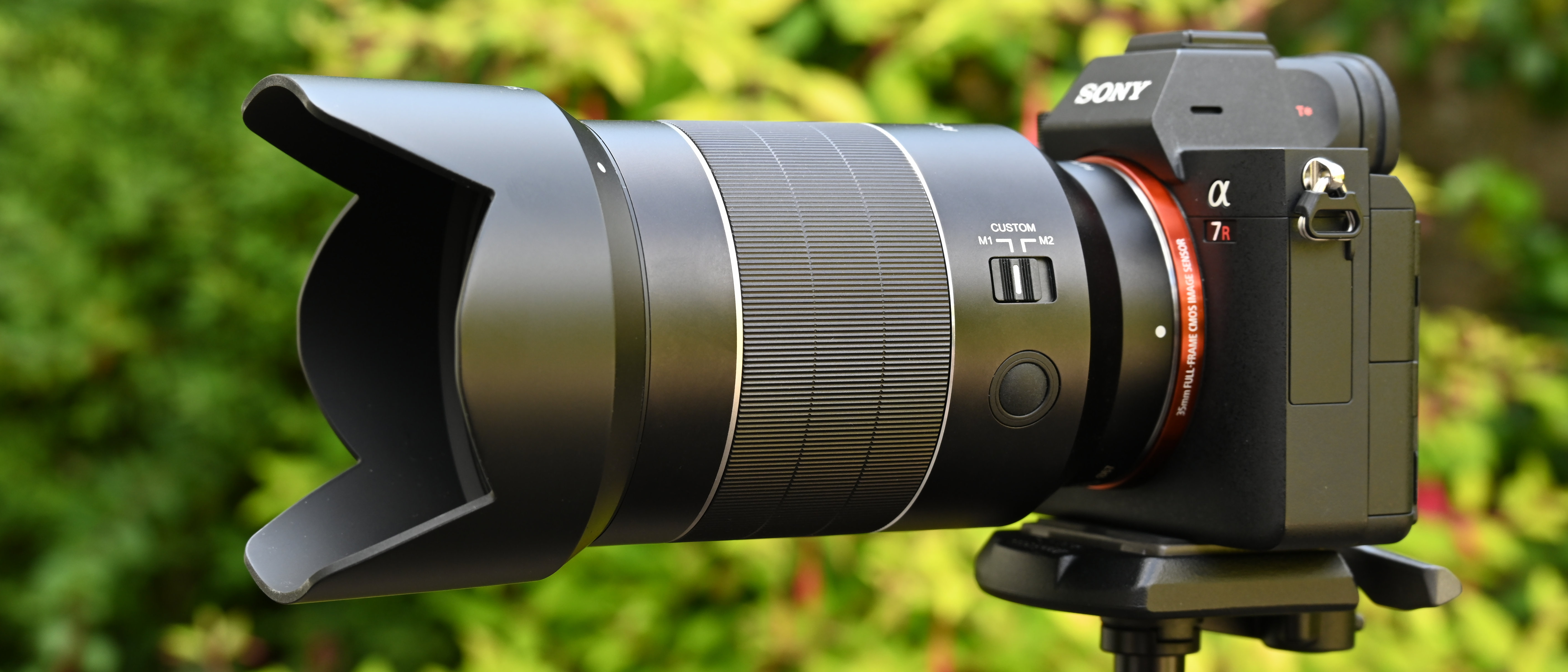Digital Camera World Verdict
The second edition of Samyang’s E-mount 35mm f/1.4 prime delivers exceptional sharpness and excellent all-round performance. It also adds some neat handling extras, compared with the original lens, yet still sells for around half the price of Sony’s own-brand FE 35mm F1.4 G Master. All in all, the Samyang is a fabulous lens and outstanding value at the price.
Pros
- +
Excellent handling and image quality
- +
Customizable controls
- +
Weather-seals
Cons
- -
Larger than the competing Sony GM
- -
Not a zero-distortion lens
- -
Bokeh could be smoother
Why you can trust Digital Camera World
As a fast 35mm prime, the Samyang AF 35mm F1.4 FE II will appeal to street photographers and it’s also ideal for anyone who likes a modestly wide viewing angle coupled with a wide aperture for maintaining quick shutter speeds under low lighting conditions and gaining a tight depth of field in close-ups. The Samyang also works really well as a fast ‘standard prime’ on Sony’s APS-C format E-mount bodies, on which it gives an effective focal length of 52.5mm.
Specifications
Mount: Sony E (FE)
Full-frame: Yes
Autofocus: Yes
Stabilization: No
Lens construction: 11 elements in 9 groups
Angle of view: 65.5 degrees
Diaphragm blades: 9
Minimum aperture: f/16
Minimum focusing distance: 0.29m
Maximum magnification ratio: 0.18x
Filter size: 67mm
Dimensions: 75x115mm
Weight: 659g
Key features
The original edition of this Samyang/Rokinon lens worked really well but the Mark II adds some useful extra features. There’s a new two-way Custom switch that enables you to use the focus control ring for manual override of autofocus, or for stepless (de-clicked) aperture control. That’ll be an instant hit with videographers. The Mark II also adds an autofocus-hold button which is another nice handling extra. Both the switch and the function button can be customized to take on alternative roles, via the optional Samyang Lens Station, which costs around £60/$60.
Autofocus is driven by a new linear stepping motor which is claimed to be faster and more accurate in operation, as well as being fully compatible with Sony’s advanced AF modes, where featured in E-mount mirrorless cameras.
The optical path is based on 11 elements in 9 groups. These include two aspherical elements and two HR (High Refractive index) elements to boost clarity while reducing chromatic aberrations. Samyang’s excellent ‘Ultra Multi Coating’ is applied to minimize ghosting and flare.
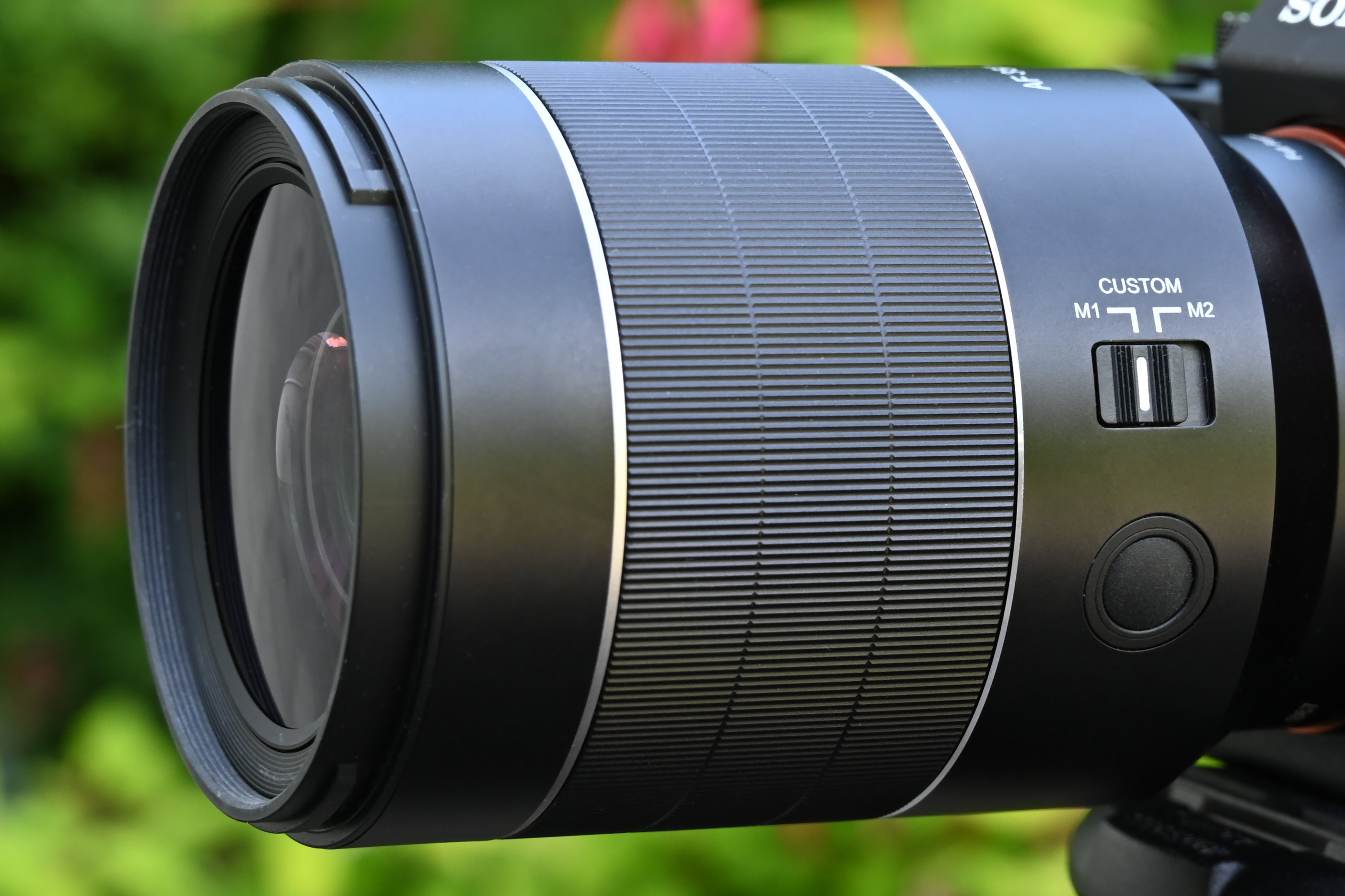
Build and handling
The lens feels quite chunky on a Sony mirrorless body and at 75x115mm and 659g, the Samyang is both larger and heavier than Sony’s 35mm F1.4 G Master lens. Even so, it’s easily manageable and the fully internal autofocus mechanism means that the front element neither extends nor rotates during focusing. That’s good news in terms of handling, especially when using filters like circular polarizers and ND grads.
Build quality feels very solid and the construction features multiple weather-seals. The mode switch and lens function button are ideally placed and operate with a good tactile feel. The same goes for the focus ring which is comfortably large and well damped, enabling precise control over manual focus and stepless aperture adjustments.
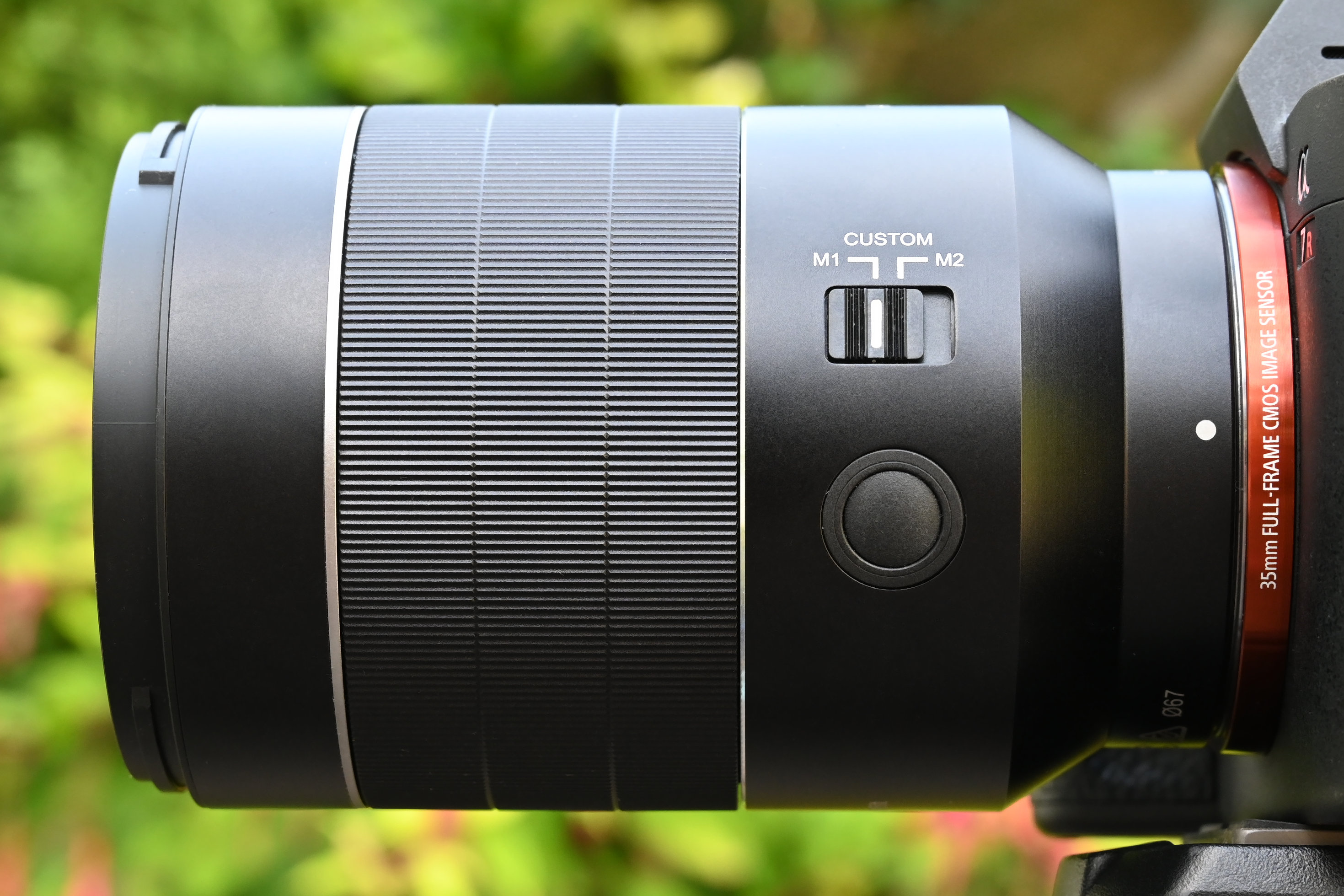
Performance
The autofocus system lives up to its billing, with an excellent turn of speed and virtually silent operation. For an f/1.4 lens, sharpness is excellent when shooting wide-open. Centre-sharpness becomes scintillating even at f/2 and sharpness across the whole frame is epic from f/2.8 all the way through to the narrowest aperture of f/16.
Both axial and lateral chromatic aberrations are very negligible, the latter being barely noticeable even towards the extreme corners of the frame. There’s a touch of barrel distortion but it’s minor and of a uniform nature, so easily corrected automatically in-camera or during editing, if you feel the need.
Resistance to ghosting and flare is excellent. Our only slight criticism in terms of overall performance and image quality is that bokeh can look a bit fussy in some conditions, like when shooting close-up subjects against a very detailed and high-contrast background. In this respect, the Sony G Master lens has the edge over the Samyang.
Sample images





Lab results
We run a range of lab tests under controlled conditions, using the Imatest Master testing suite. Photos of test charts are taken across the range of apertures and zooms (where available), then analyzed for sharpness, distortion and chromatic aberrations.
We use Imatest SFR (spatial frequency response) charts and analysis software to plot lens resolution at the center of the image frame, corners and mid-point distances, across the range of aperture settings and, with zoom lenses, at four different focal lengths. The tests also measure distortion and color fringing (chromatic aberration).
Sharpness:
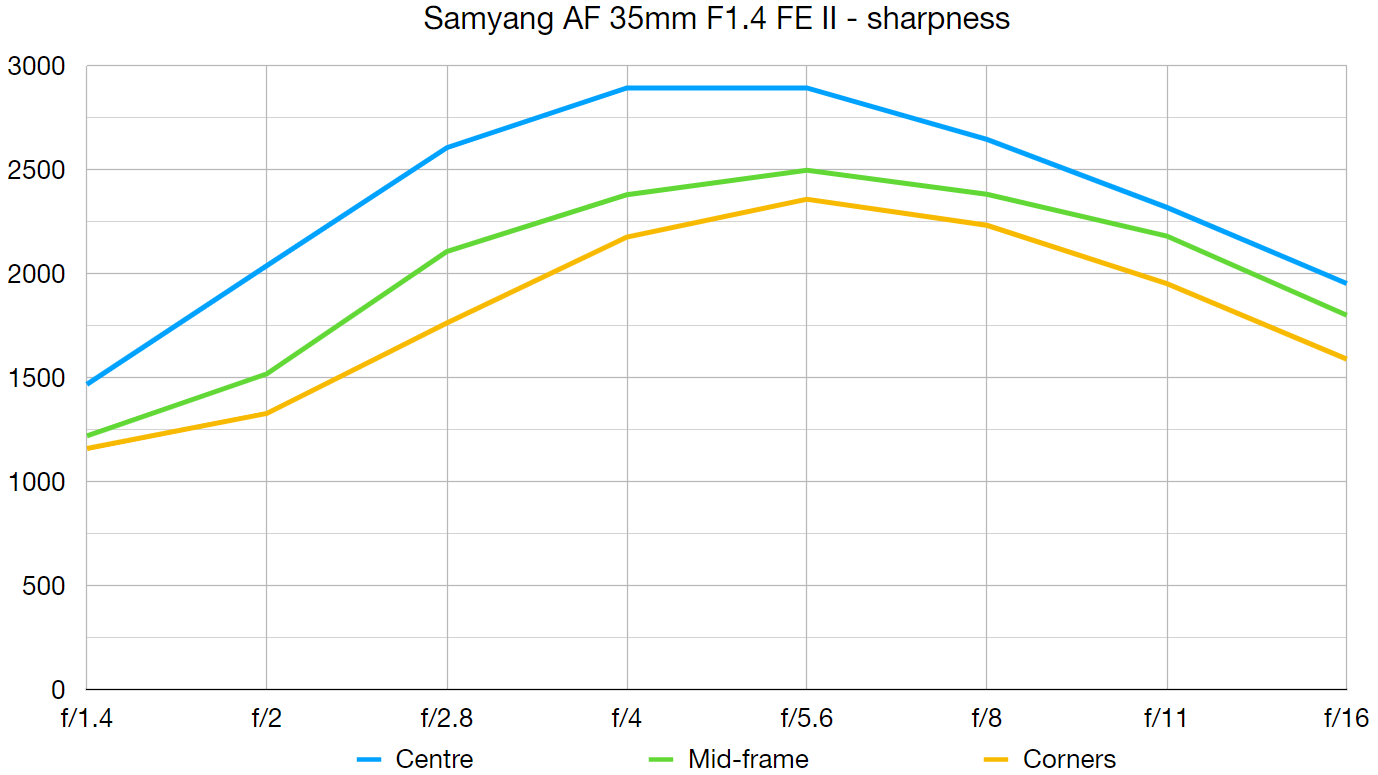
When shooting wide-open, sharpness across the whole frame is very respectable for an f/1.4 lens. Narrowing the aperture by a single stop to f/2 brings superb center-sharpness and the edges and corners follow suit at f/2.8. Sharpness remains excellent right through to the narrowest aperture of f/16, the lens doing well to limit narrow-aperture softening from diffraction.
Fringing:
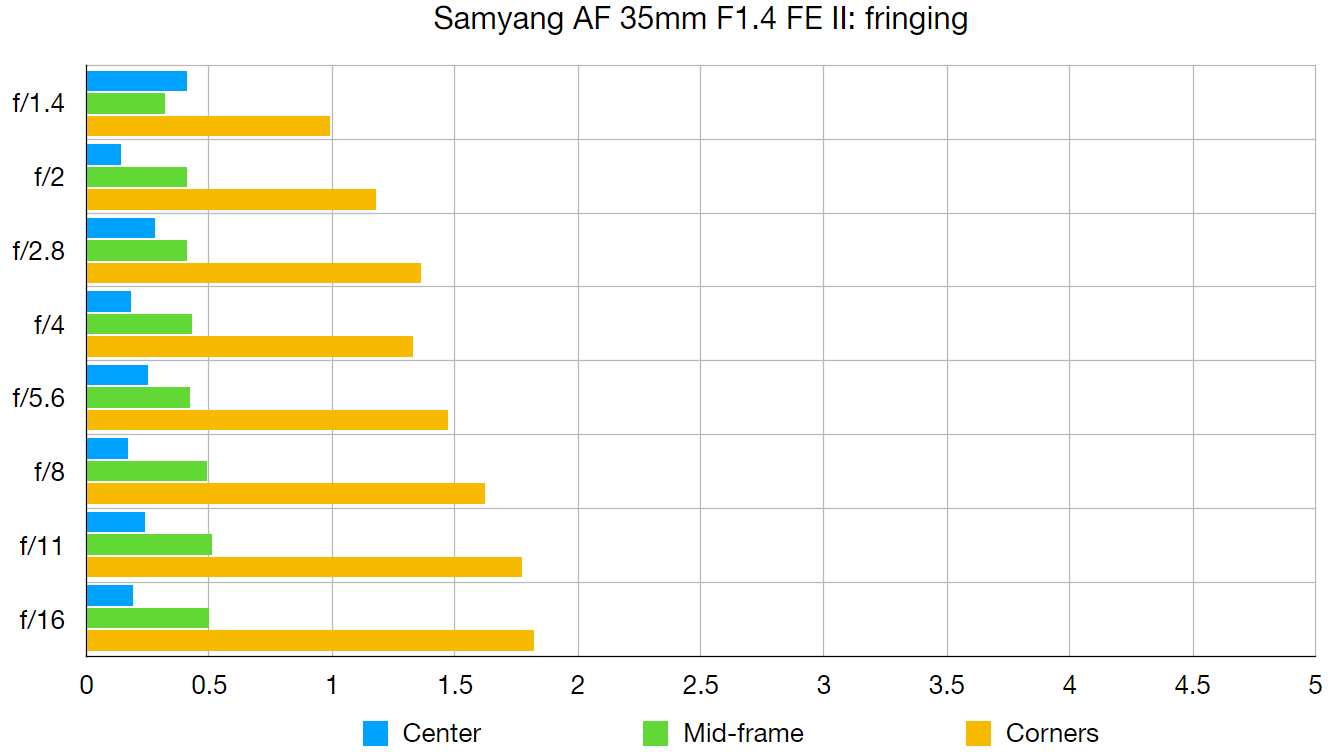
There’s negligible axial chromatic aberration even when shooting at the widest aperture. Lateral chromatic aberration is also very minimal at f/1.4 but gets progressively a little worse as you stop down throughout the aperture range. Even at narrow apertures, it’s not generally noticeable and can be easily eliminated with in-camera correction.
Distortion: -1.69
The Samyang isn’t a zero-distortion lens but the amount of barrel distortion is only slight. If it does become noticeable, for example in architectural photography, in-camera correction is available and the uniform nature of the distortion also makes it easy to correct manually.
Verdict
The second edition of Samyang’s E-mount 35mm f/1.4 prime delivers exceptional sharpness and excellent all-round performance. It also adds some neat handling extras, compared with the original lens, yet still sells for around half the price of Sony’s own-brand FE 35mm F1.4 G Master. All in all, the Samyang is a fabulous lens and outstanding value at the price.
Read more:
• Best camera lenses to get
• Best Canon lenses
• Best Nikon lenses
• Best Sony lenses
Matthew Richards is a photographer and journalist who has spent years using and reviewing all manner of photo gear. He is Digital Camera World's principal lens reviewer – and has tested more primes and zooms than most people have had hot dinners!
His expertise with equipment doesn’t end there, though. He is also an encyclopedia when it comes to all manner of cameras, camera holsters and bags, flashguns, tripods and heads, printers, papers and inks, and just about anything imaging-related.
In an earlier life he was a broadcast engineer at the BBC, as well as a former editor of PC Guide.

